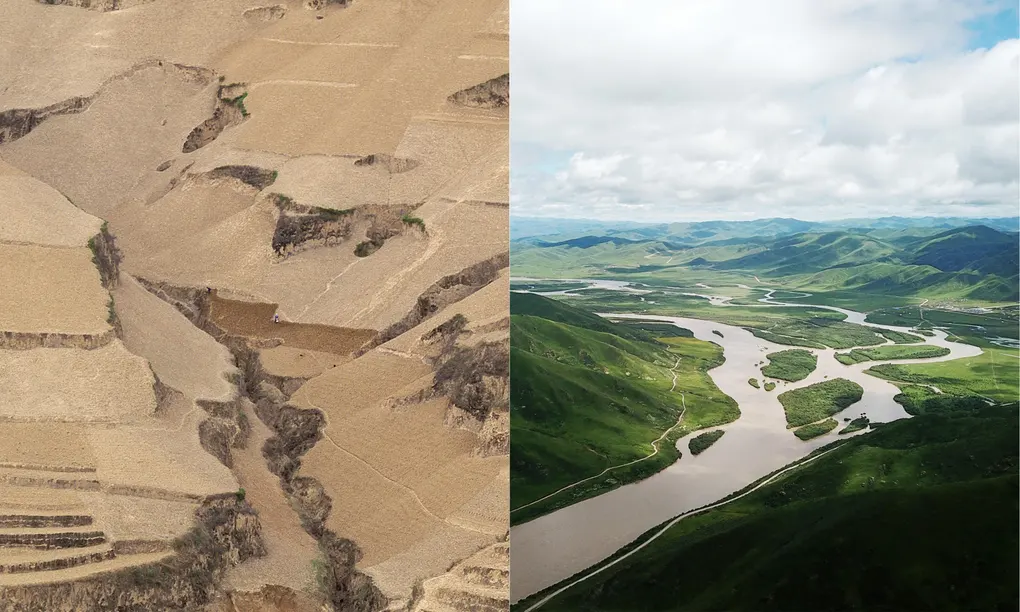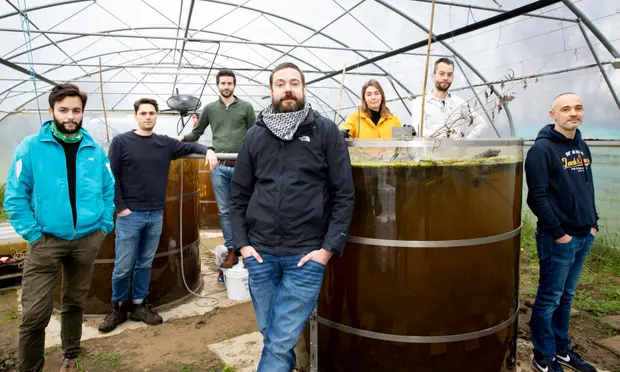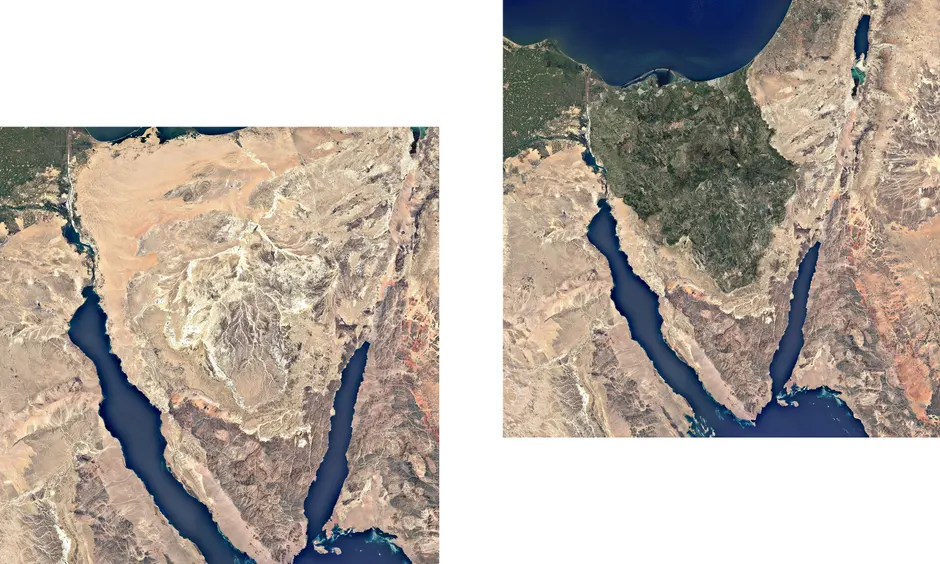Weathermakers
(Photo top: theweathermakers.nl)
You are reading the English original, translations are available here: Deutsch.
Following my post on Geoentropy a month ago I talked to a fair number of people, journalists, publishers, scientists and the Weather Makers.
In general it seems we live in a strange time where the IPCC (International Panel on Climate Change) pushes to make its model on global warming based on CO2 emissions the basis of all policy making. The IPCC model on climate change is rather lightweight on scientific facts, i.e. it merely projects a gradual increase of the CO2 level in the atmosphere that will cause us trouble in a hundred years or so. At the same time the mainstream media runs huge campaigns that try to convince us that climate change is real by providing all kinds of statistics to show us its current impact. This doesn't stack up, if a significant impact from the CO2 level is only expected many generations in the future, it can't be the explanation of the climate change we are seeing already.
There is an increasing number of scientists who notice this gap, but as the funding of most basic research is based on policy making and this in turn is based on the IPCC climate model, the research of the true causes doesn't receive the funds it deserves.
The difference

Three weeks ago The Guardian published an interesting article under the title ‘Our biggest challenge? Lack of imagination’. In principle it tells the story what we could achieve, if we get our science right.
This article references a documentary done by John D. Liu, What if we change, that shows the enormous impact restored ecosystems can have. The video tells you a lot about how humans change the landscape and the resulting climate change, what causes it, and how we can reverse it. The video (make sure to watch it on 1080p) is a revelation. The question that remains is why don't we do it.
The article on The Guardian also explains important work done by Professor Millán Millán, a Spanish meteorologist:
In the 1990s, Millán began investigating the disappearance of summer storms in eastern Spain for the European commission.“What I found is that the loss is directly linked to the building up of coastal areas,” he says. Rainfall in the region comes almost entirely from Mediterranean sea breezes. However, the breeze alone doesn’t carry enough water vapour to create a storm inland; it needs to pick up extra moisture, which it used to do from the marshes and wetlands along the coast. Over the past two centuries, however, these wetlands have been built on or converted to farming land. No additional moisture; no more storms. “Once you take too much vegetation out, it leads to desertification very quickly,” says Millán.
Such changes do not just affect the weather at a local level, Millán discovered: “The water vapour that doesn’t precipitate over the mountains goes back to the Mediterranean and accumulates in layers for about four or five days, and then it goes somewhere else: central Europe.” In other words, building on the Spanish coast was creating floods in Germany.
But the main focus of the article is on the Weather Makers.

They are a small group of people who banded together to form a company that does indeed what John D. Liu asked, to restore ecosystems.
Their current project is nothing less than regreening the Sinai peninsula. It is an interesting project from an engineering point of view because it uses a sophisticated system of interconnected clear-sided water barrels covered by a greenhouse, which they call an eco machine.
These water barrels contain different mini-ecosystems that are used to filter and process water in different stages, so that over time a new self-sustaining ecosystem develops in the greenhouse. Eventually the greenhouse can be removed and what remains is an area of arable land. Imagine this repeated step by step over the entire Sinai and you get the picture.

It looks like a miracle. In truth it is the result of sound science and engineering, made possible by human ingenuity.
But there is one more important point: these mini-ecosystems are vital, they are not a machine, they represent a form of intelligence that adapts to have the clear-sided water barrels fulfil their role in the eco machine.
We have no problem to view water as life, but many people balk at the notion that the microbiome that lives in these barrels of water is intelligent. Why? Because we have a high-level notion of what intelligence is?
Intelligence isn't something abstract, it is always represented by something real. In this case it is the ability of the microorganisms to adapt to different environments, to different nutrients and temperatures. And this ability to adapt has its root in the genetics of the microorganisms. But there is more. The genetic pool of these microbiomes has been honed over millions of years, so that the huge variety of microorganisms together can perform a function to create an environment that sustains them.
That's the hallmark of something intelligent, to interact with its environment in a way that is favourable, the quintessential feedback loop that allows life to survive and thrive.
Vladimir Vernadsky
The Russian scientist Vladimir Vernadsky (1863 - 1945) devoted his life to systematically research the interaction between the anorganic and organic part of the geosphere. He coined the term biosphere for the latter.
Vernadsky's work is significant because he recognizes the self-regulating nature of the biosphere. An article published on nd in 2001 praises his work for the scope of his research (translated from German):
In 1926 Vernadsky published the book "Biosfera" and formulated the theory of the living shell of the planet Earth, the biosphere. The importance of this theory was recently acknowledged by biologist Lynn Margulis and science publicist Dorion Sagan (USA), who said, "Vernadsky did for space what Darwin did for time. While Darwin documented that all life descended from a distant ancestor, Vernadsky showed that all life occupies a materially uniform space, the biosphere."
Vernadsky conceived of life as a planetary phenomenon and the biosphere as a shell of the Earth formed by the living itself. It penetrates and integrates the rock envelope (lithosphere), the water envelope (hydrosphere) and the gas envelope (atmosphere) of the planet and profoundly conditions their nature. This is shown in the biogenic origin of the atmospheric oxygen as well as in the lithosphere as the area of former biospheres, as a stony development product of the biosphere.
The events in the biosphere are essentially based on the solar energy radiating from space and utilized by the chlorophyll-containing organisms such as cyanobacteria and green plants. Through the living activity of the organisms, the cosmic energy of the sun is converted into terrestrial energy (chemical, mechanical, thermal, electrical, etc.).
Altogether, the biosphere is the most comprehensive ecosystem on the planet - a gigantic, diversely subdivided, thermodynamically open, self-regulating and evolving system.
The SciHi Blog adds:
Vernadsky’s visionary pronouncements were not widely accepted in the West. However, he was one of the first scientists to recognize that the oxygen, nitrogen and carbon dioxide in the Earth’s atmosphere result from biological processes. During the 1920s he published works arguing that living organisms could reshape the planets as surely as any physical force. [1]
[1] Vladimir Vernadsky and the Biosphere at Britannica
For anyone who would like to learn more of the scope of what we are talking about here, the entry in the Encyclopedia Britannica is absolutely worth reading. It is well written, excellently explained and gives you a good overview of the breadth of the subject.
Understanding that the biosphere is a self-regulating system is a key. It does not only adapt, during the course of its evolution it has learned to adapt its ability to adapt, i.e. this is recursive, it is a learning system. If you consider the breadth of this adaption in time (hundreds of millions of years) and space (an entire planet), it isn't a surprise that a clear-sided water barrel full of microorganisms can help the Weather Makers to achieve astonishing results.
With other words the Weather Makers have learned to employ as engineers what Vernadsky researched in theory, life's capability to adapt and self-regulate.
This capability of ecosystems to adapt is also what allowed civil engineers to regreen the Loess plateau in China.
Intelligence of ecosystems
There is a reason why I call this capability of the biosphere to self-regulate intelligence.
While the Weather Makers approach the subject as engineers, and Vernadsky from the angle of a geochemist and biochemist, my angle is one of a scientist who researches intelligence. What it is and how it manifests.
Geoentropy, as explained in my previous blog, is the attempt to put all this together in the context of climate change. A lot of people falsely interpreted this to be another alarmist take on Gaia theory. No it isn't. Instead it is hard science based on geology, geochemistry, biochemistry, genetics and meteorology.
The field is so vast, considering the scientific disciplines involved, that it requires a specific focus to arrive at meaningful research results.
What I am proposing is technically to have the different faculties work together on the basis of one unifying model.
Everyone who works in the field of climate change knows how difficult it is to come up with a scientific model of even a few key aspects of climate change, let alone a comprehensive model of it. Drawing up a model, or models, in the traditional way employed by scientists so far, is simply not feasible given the complexity of the subject. You could even argue that to describe an intelligent system it requires a system that is intelligent itself. The tools available from the self-proclaimed leaders in AI like Google, e.g. deep learning based on neural networks and clusters of supercomputers, aren't even remotely close to achieve such a feat.
Instead it requires a much more sophisticated approach to AI, a solution that can track the tens of thousands of scientific dependencies required for the model with a mathematic precision that allows to verify all aspects of the model in detail.
The universal singular solution for AI I have here can do this.
Towards a model
In principle symbolic AI, i.e. rule-based systems aren't new. The problem in their application is that once the number of rules exceeds a certain threshold, the computation required to track the rules and their interdependencies grows exponentially. It is like a complex differential equation to which more and more variables are added. At one point it becomes too complex to solve.
The solution I have here can solve this. It is an AI that enhances the principle of symbolic AI by the capability of automated abstraction. It is a vastly powerful feature that allows the AI to structure problems, focus on the interdependencies that matter and as a result handle vastly more complex tasks than present technology could.
I can't provide you with a proof here, but I can explain to you how this system works in practice, and how it can be applied. Proof will eventually follow by demonstrating the resulting system in practice, along with means to verify that the results arrived at are correct.
The idea is to build a complete model of the Earth's mantle, crust, hydrosphere, atmosphere and magnetosphere, including the location and relative distance of all landscapes, their layout and properties. The key element of this model is the incorporation of rules about everything we know that affects its behaviour. The rules comprise every aspect we have scientifically established, ranging from the conditions that affect the evaporation of water to the effects different types of land and ecosystems have, to regional weather feedback systems, the diversity of species in ecosystems, their impact on the chemistry and water cycle, to genetics. The AI incorporates rules as scientists specify these, there is no limit to their number, but the requirement that these are logically consistent. The AI tracks all rules and interdependencies between them and verifies that the rules are consistent. In the next step the AI builds a logical model based on the rules. This model isn't a static picture, but rather a dynamically evolving entity with its own behaviour based on well defined rules, i.e. the transition to a full simulation of the model is fluent, so that researchers can evaluate any aspect and parameter as they see fit with mathematical precision during the entire scope of a simulation.
Computationally this isn't possible with current technology. The AI makes this feasible because of its capability to abstract different parts of the model on demand. Often you can define interactions with a different degree of accuracy, for example you could simulate the evaporation after a rain in a tropical rainforest based on the properties of individual trees, but in most cases the typical evaporation for a type of forest is sufficient to determine its impact on the weather. The AI choses the most suitable degree of abstraction dynamically based on the knowledge of rules it has. This allows for a highly scalable simulation that can determine the most significant high-level behaviour of vast and highly complex systems. The AI can even tell you what abstractions it used.
In short the AI allows researchers to build highly complex models that are verified to be logically consistent. Researchers can then examine every aspect of the model built by the AI based on the given rules, and use simulation to determine its behaviour.
The intended application is a model of our world's climate, down to regional weather patterns and sufficiently detailed to measure the impact human alterations to the landscape have.
Once we have this, we could say with reasonable certainty what causes climate change. Vice versa we will be able to tell whether the work the Weather Makers do applied to a global scale will save us from the worst of climate change.
What I am looking for are researchers who are highly competent in their research area and dare to tackle this task with an AI that hasn't been proven yet, but may well be the most advanced tech of its kind.
It is a herculean task that requires highly dedicated and skilled researchers, a multidisciplinary team who shares a love for this world. It is even a tough task to set up this project, and there are always reasons to hesitate, but should we?
Or to paraphrase John D. Liu in his closing statement: why do we not do it?
